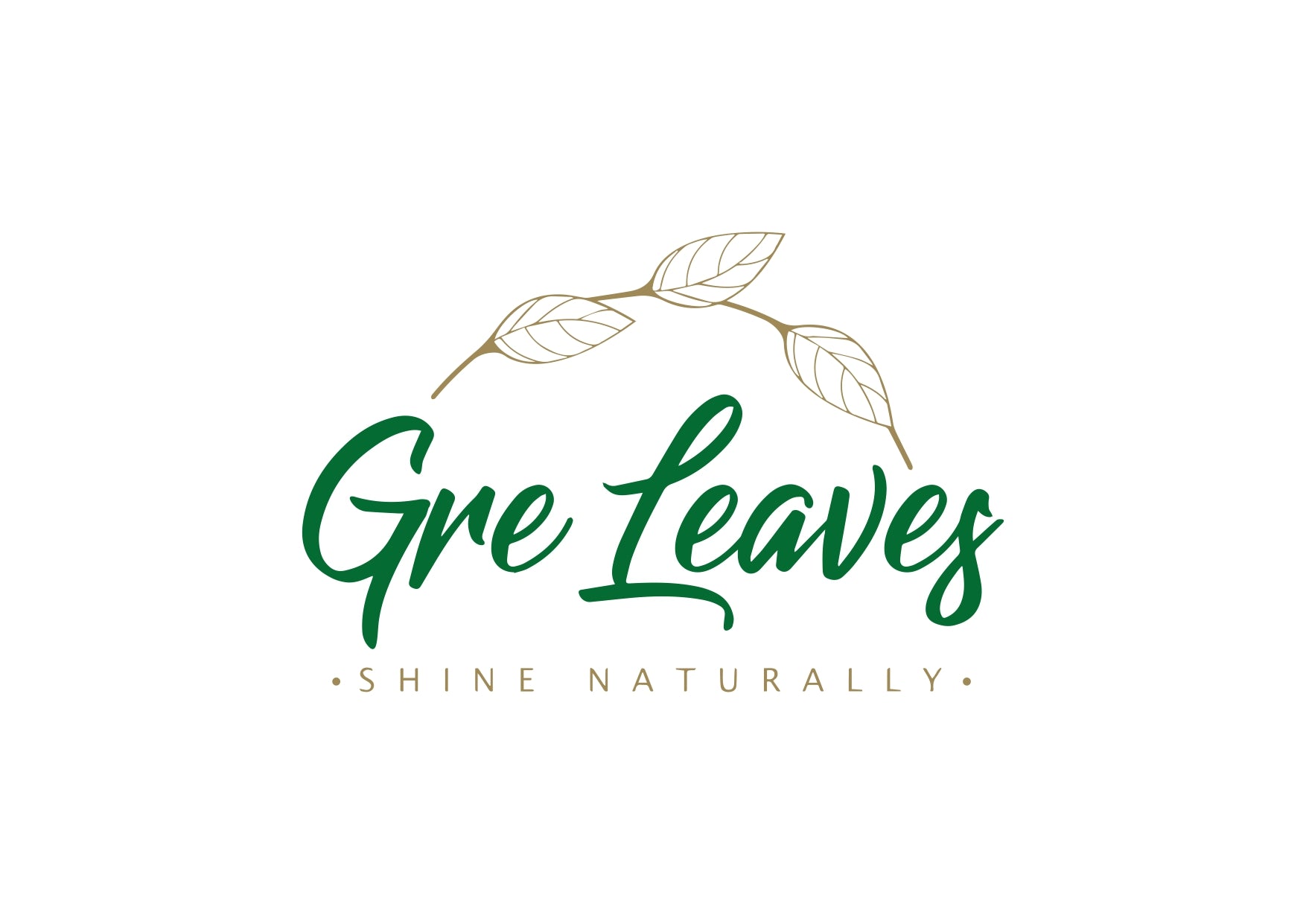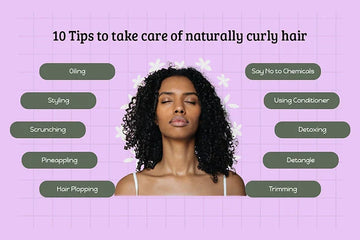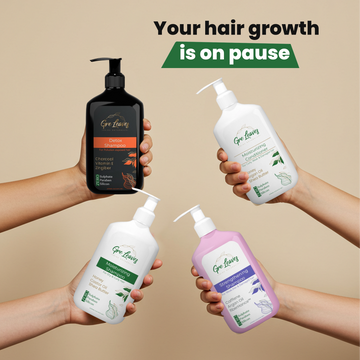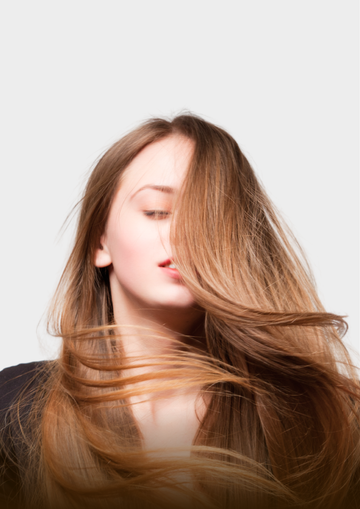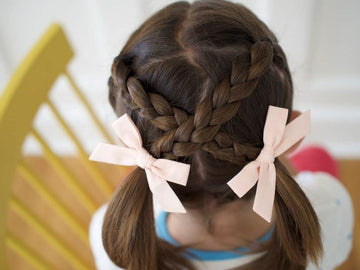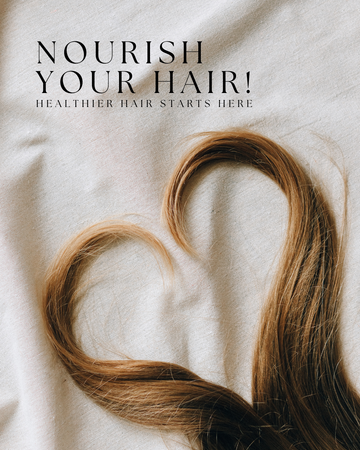How to Create the Best Hair Care Routine: Expert-Backed Tips That Actually Work

Did you know the way you wash your hair and the products you use can actually make a big difference in your hair health? Creating the best hair care routine isn't just about following trends—it's about understanding what your unique hair needs.
Your hair is as unique as you are , whether it's Type 1 straight hair, tightly kinked Type 4c curls , or something in between. Achieving healthy locks will be a different journey for everyone! For some, dryness and damage are the main concerns, while others struggle with oiliness, frizz, or even hair loss .
Essentially, every effective hair care routine contains some important steps: cleansing, conditioning, moisturizing, detangling, styling and treatment . However, how often you complete these steps depends entirely on your hair texture and type . Those with thin, fine hair might need daily washing as this hair type tends to get greasy more quickly .
In this guide, we'll walk you through creating a personalized hair care routine that addresses your specific needs. From understanding your hair type to tackling common concerns like flakes (which could simply result from not using the right conditioner or scalp moisturizer ), we've got you covered with expert-backed tips that actually work.
Step 1: Cleanse and Prep the Scalp
"Invest in your hair. It's the crown you never take off." — Beyoncé, Grammy Award-winning singer, cultural icon, and entrepreneur known for her influence in beauty and fashion
A healthy scalp is the foundation for vibrant hair. The often overlooked truth is that scalp health directly impacts hair growth, shine, and overall appearance.Proper cleansing begins with understanding your scalp type. For oily scalps, daily washing might be necessary, whereas those with dry scalps should limit washing to once or twice weekly [1]. For textured or coily hair, washing once every 1-2 weeks prevents moisture loss and reduces fragility [1]. Remember, excessive washing can trigger your scalp to overproduce oil [2].
When cleansing, focus on technique. Start with thoroughly wetting your hair, then concentrate shampoo on your scalp rather than the length of your hair [3]. Massage in gentle, circular motions using fingertips—not nails—to stimulate blood flow without creating tangles [4]. This massaging action boosts circulation, promoting stronger, healthier hair growth [5].
Temperature matters too. Opt for lukewarm water instead of hot, which can strip natural oils and leave hair frizzy and damaged [6]. After shampooing, rinse completely to remove all product residue.
For deeper cleansing, incorporate scalp exfoliation into your routine once or twice weekly [2]. This process removes dead skin cells, product buildup, and excess oil that regular shampooing might miss [7]. Consequently, your scalp absorbs hair care products more effectively when free of buildup [7].
Choosing the right shampoo is equally crucial. For oily scalps, look for volumizing or balancing formulas [8]. If you have a dry scalp, avoid strengthening or fortifying shampoos which can further strip moisture [8]. Those with dandruff should seek medicated options containing zinc pyrithione or ketoconazole [9].
Furthermore, consider a monthly deep cleanse with a clarifying shampoo to remove mineral buildup, particularly if you have hard water [6]. This prevents the filmy, dull texture that can develop over time without proper cleansing.
By giving your scalp the attention it deserves, you're setting the stage for your best hair ever.
Step 2: Condition, Moisturize, and Detangle

Image Source: The Love of People
Conditioning is often the unsung hero in any hair care routine. After cleansing, your hair needs replenishment—think of conditioning as the crucial step that restores what washing removes.
For those with curly hair, conditioning becomes even more vital. Curly strands struggle to receive natural oils from the scalp, making them particularly prone to dryness. Cold, low-humidity air naturally draws moisture from your strands, leaving curls parched and unruly. To combat this, look for conditioners containing shea butter, jojoba oil, and panthenol to hydrate and lock in moisture.
Application technique matters tremendously. After rinsing out shampoo, work conditioner throughout your mid-lengths and ends where dryness most commonly occurs. For curly hair, use a generous amount and distribute evenly with a wide-tooth comb. This not only ensures thorough coverage but also begins the detangling process when hair is most pliable.
Beyond regular conditioning, incorporate a weekly deep conditioning treatment. These intensive formulas provide thorough hydration for struggling strands. Apply your hair mask to wet hair, allowing it to sit for 3-5 minutes before rinsing. For maximum benefits, some experts recommend using a hair steamer to open the cuticle, allowing deeper penetration.
Leave-in conditioners offer another layer of protection. These products not only detangle and soften but continue moisturizing throughout the day. Apply a quarter-sized amount from roots to ends after conditioning for extra TLC.
When it comes to detangling, patience is non-negotiable. Always begin at the ends and gradually work upward to prevent breakage. For curly or coily textures, detangle while hair is wet and slippery with conditioner for minimum resistance. Fine hair requires gentler handling—use a detangling spray and wide-tooth comb to avoid unnecessary tension.
Finally, seal everything with hair oil. This crucial step locks in hydration and prevents frizz, particularly important for curly and textured hair. Just a few drops smoothed through your strands can make all the difference in maintaining moisture until your next wash day.
Step 3: Treat, Style, and Protect
"Treat your hair like you would treat your best friend." — Kaya Skin Clinic Editorial Team, Professional team at a leading dermatology and hair care clinic
Treatment, styling, and protection form the vital final steps in any effective hair care routine. This stage is especially critical for those dealing with damaged strands that need extra attention.Damaged hair benefits immensely from specialized bond-repairing products that strengthen hair from within. These products work by reinforcing weakened hair bonds, penetrating deep into the hair cortex to rebuild its natural structure. For best results, incorporate protein treatments into your routine to heal damage and leave hair feeling silky.
Heat protection should never be an afterthought. Always apply a heat protectant before reaching for hot tools, as this creates a protective barrier against thermal damage. Importantly, lower the temperature of your styling tools—hair can start to melt at 220°C, with damage beginning at temperatures above 200°C. Ideally, stay below 180°C to prevent cuticle damage and breakage.
Between styling sessions, give your hair regular breaks. Embrace your natural texture occasionally and consider heatless styling methods like foam curlers, braids, or the pineapple method while sleeping. Subsequently, extend your style's longevity by utilizing dry shampoo and proper nighttime care.
For added protection and nourishment, incorporate oils and serums into your routine:
· Hair oils (like argan or coconut) penetrate the hair shaft, providing deep nourishment
· Hair serums coat the strands, offering protection and shine without greasiness
· Leave-in treatments seal split ends and create barriers against environmental damage
Weekly treatments should be tailored to your specific needs. Deep conditioning masks with ingredients like fatty acids, silk proteins, and humectants can restore moisture to damaged strands. Additionally, scalp treatments containing ingredients like tea tree oil help maintain the foundation for healthy hair growth.
Remember that your hair's protection extends beyond products. Sleep on silk or satin pillowcases to prevent friction, and shield your hair from UV damage with protective products during sun exposure.
Conclusion
Creating your perfect hair care routine doesn't need to feel overwhelming. After all, healthy hair starts with understanding your unique hair type and specific needs. Throughout this guide, we've explored the three essential pillars of effective hair care: cleansing, conditioning, and treating.
Your scalp deserves special attention as the foundation for healthy hair growth. Proper cleansing techniques, the right water temperature, and appropriate washing frequency based on your hair type make a significant difference in overall hair health.
Conditioning emerges as equally important, especially for those with curly or textured hair that needs extra moisture. Additionally, proper detangling techniques prevent breakage while protecting your strands during their most vulnerable state.
The final step of treatment and protection completes the hair care trifecta. Heat protection, specialized treatments for damaged hair, and nighttime care routines all contribute to maintaining your hair's health between wash days.
Remember that consistency matters more than perfection. Start by implementing one or two changes at a time rather than overhauling your entire routine at once. Your hair will thank you as you gradually adopt these expert-backed practices.
Most importantly, listen to your hair. What works beautifully for someone else might not suit your specific needs. Therefore, be willing to adjust your routine as seasons change, or as you notice changes in your hair's behavior.
We hope this guide helps you build a hair care routine that transforms your relationship with your hair. Soon, you'll discover that those "good hair days" become your new normal!
References
[1] - https://www.medicalnewstoday.com/articles/how-often-to-wash-hair
[2] - https://www.healthline.com/health/beauty-skin-care/exfoliation-for-scalp
[3] - https://www.carolsdaughter.com/blog/hair/hair-care-tips/how-to-wash-curly-hair.html
[4] - https://rezoacademy.com/blogs/news/how-to-properly-wash-curly-hair
[6] - https://www.healthline.com/health/beauty-skin-care/washing-hair
[8] - https://www.byrdie.com/shampoo-101-choosing-the-right-shampoo-3517815
[9] -https://www.drziyayavuz.com/how-to-choose-the-right-shampoo-for-your-hair-type/
